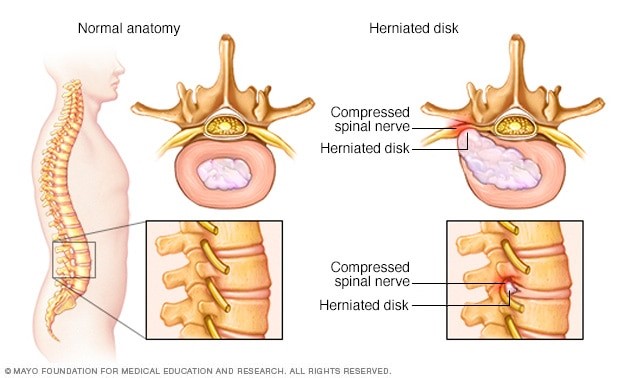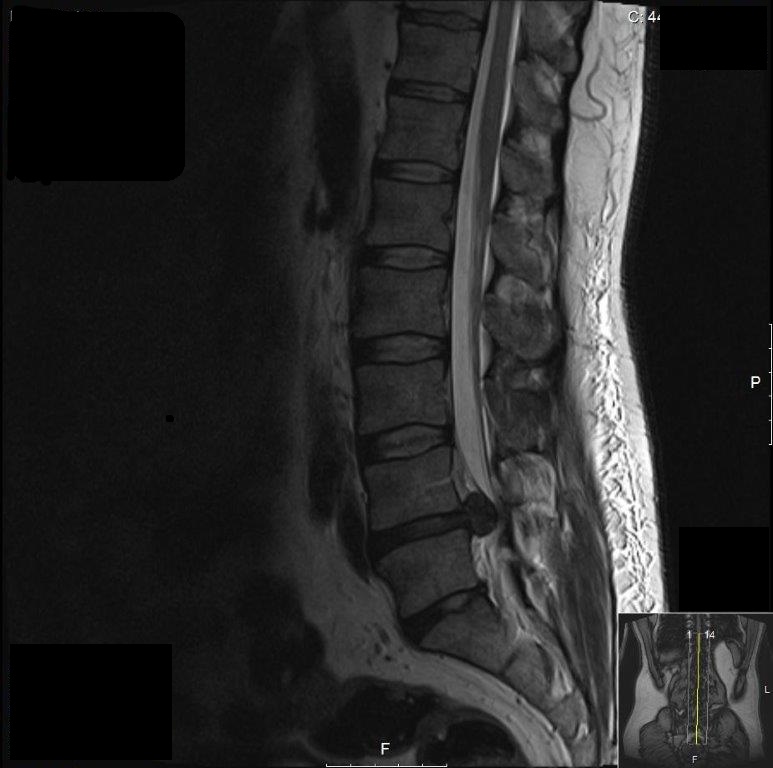sciatica
What is sciatica?
Sciatica refers to pain that radiates along the path of the sciatic nerve, as it emerges from your lower back, passing through your hips and buttocks and traveling down the leg, as far as the toes. Pain may be accompanied by other symptoms such as tingling, burning and weakness in the leg, and extend down to the ankle or foot. Symptoms are usually only felt on one side, but it is possible to experience them on both sides.
Most cases of sciatica settle spontaneously within 6 to 12 weeks and do not need any specific treatment. Occasionally, sciatica may persist and develop into a chronic condition.
Sciatica most commonly occurs when a herniated (ruptured) disk, bony spur on the spine or narrowing of the spine (spinal stenosis) compresses part of the nerve. This causes inflammation of the nerve as well as pain and often some numbness in the affected leg. In 90% of cases, sciatica is caused by a herniated disc with nerve root compression,
Severe episodes of sciatica, with associated leg numbness or weakness or symptoms affecting the bowel or bladder changes may need to be assessed by a spinal surgeon. If bowel or bladder symptoms or loss of leg power progresses rapidly, this may become a surgical emergency. This is known as cauda equina syndrome.
As sciatica is caused by nerve irritation, it is a form of neuropathic (nerve) pain and in fact, is the most common presentation of this.
what are the symptoms of sciatica?
Sciatica is characterised by a pain that radiates from the lumbar spine through the buttock and down the back of your leg, often as far as the ankle or even the toes. Pain can be experienced anywhere along the nerve pathway, but tends to follow a path from the low back through your buttock and the back of your thigh, down to the calf, ankle and foot (depending on the lumbar level where the problem is happening.
The pain experience is highly variable from one individual to another. The description of the pain varies from a mild ache through to a sharp, burning sensation or even excruciating, with the sensation of electric pulses or shocks. It may be aggravated by coughing or sneezing, or prolonged sitting. Pain tends to be felt on one side only, but occasionally can be felt on both sides.
Some may experience numbness, tingling or muscle weakness in the affected leg or foot, or even, on occasions pain in one part of the leg and numbness in another part.
what is the cause of sciatica?
Sciatica occurs when one of the branches that forms the sciatic nerve becomes pinched or irritated, as it leaves the spinal canal. Pain is most commonly caused by a herniated (ruptured) disk in your spine pressing on the nerve as it leaves the main spinal cord. This is the cause of pain in about 90% of cases. However, it may also be caused by an overgrowth of bone (bone spur) on your vertebrae, leading to a spinal stenosis. This is a narrowing of the canal that the spinal cord sits in, or the tunnel where the nerve emerges from the spine. Very rarely, the nerve can be compressed by a tumor or damaged by a disease such as diabetes.

Do i need a scan?
In some cases, a scan of the lumbar spine may be useful, particularly for a new presentation of pain, or if established pain is changing in character. In general terms, a scan is only useful if it is going to be helpful in deciding on which treatment is necessary.
If leg weakness or bowel or bladder problems are developing rapidly, an emergency scan may be needed.
When the findings on a scan tie in closely with the description of pain, as well as the clinical findings on examination, this may be useful for deciding on the next step of treatment ie whether an epidural or nerve root injection may be helpful, or even whether surgery should be considered.

what can i expect from my consultation?
A thorough assessment of your pain including
- A detailed pain and medical history, concentrating on your back and sciatic pain
- A thorough spinal and neurological examination
- If indicated, rapid radiological investigations including MRI scans
- if indicated, rapid access to the opinion of a spinal surgeon
- Rapid access to appropriate management to facilitate recovery, including medical management or spinal steroid injections
- A discussion in treatment options, including medical management, epidural or nerve root injections, physiotherapy and surgical options
More info on procedures for sciatica
Other frequently seen chronic pain conditions
i am happy to consult on a number of other chronic pain conditions, including:-
- Spinal Pain (Low back or neck)
- Chronic headache (Including chronic migraine)
- Sciatica
- Fibromyalgia
- Neuropathic Pain (Nerve pain)
- Sacroiliac Joint Pain
- Widespread joint (Arthritic) pain
- Myofascial Pain (Muscle pain)
- Trochanteric Bursitis
- Knee Pain
- Chronic Facial Pain
- Post Surgical Pain
- Trigeminal Neuralgia
- Whiplash Injury
- Post Hepretic Neuralgia (Shingles pain)
- Adhesive Capsulitis (Frozen Shoulder)
- Chronic Abdominal Wall Pain (ACNES)
- Coccygeal Pain
- Painful Diabetic Neuropathy (PDN)
- Plantar Fascitis


